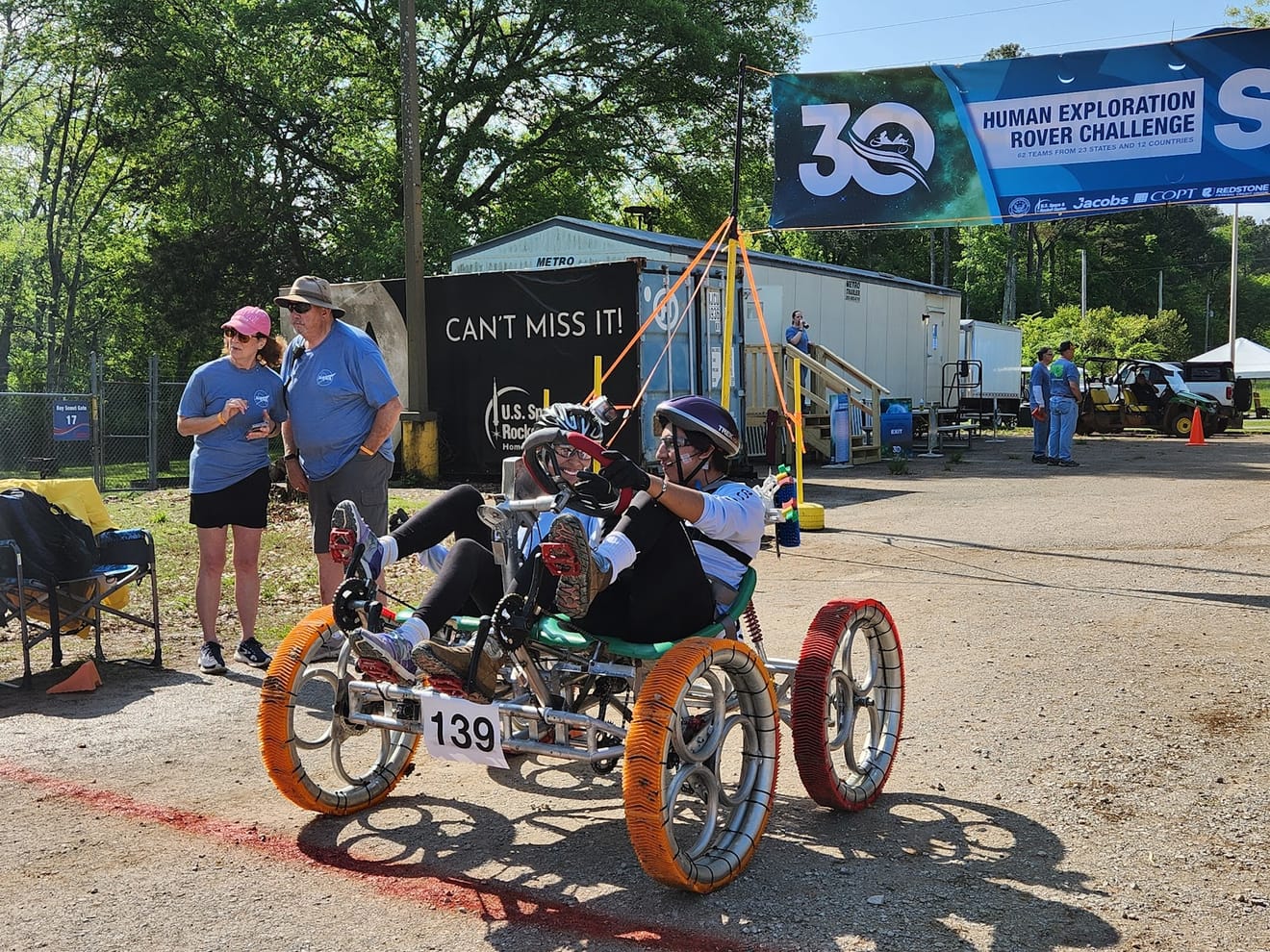- ≪장애인인식개선신문≫ NASA, 제30회 인간탐사로버 챌린지 우승자 발표
- Universidad Católica Boliviana의 학생들이 NASA의 마샬 우주 비행 센터 근처 앨라배마주 헌츠빌에 있는 미국 우주 및 로켓 센터에

Students from Universidad Católica Boliviana prepare to navigate the 2024 Human Exploration Rover Challenge course at the U.S. Space & Rocket Center in Huntsville, Alabama, near NASA’s Marshall Space Flight Center. Credit: NASA/Taylor Goodwin
NASA announced the winners of the 30th annual Human Exploration Rover Challenge (HERC) on April 22. Parish Episcopal School in Dallas took first place in the high school division, and the University of Alabama in Huntsville captured the college title.
One of NASA's longest-running challenges, the annual engineering competition held its final event April 19-20 at the U.S. Space & Rocket Center in Huntsville, Alabama, near NASA's Marshall Space Flight Center.
Here's a full list of the 2024 winners:
High School Division
1st Place: Parish Episcopal School, Dallas
2nd Place: Academy of Arts, Careers, and Technology (Reno, Nevada)
3rd Place: Escambia High School, Pensacola, Florida
College/University Division
1st Place: University of Alabama, Huntsville
2nd Place: Instituto Tecnológico de Santo Domingo, Santo Domingo, Dominican Republic
3rd Place: Campbell University, Buies Creek, North Carolina
Originality Award
University of West Florida, Pensacola, Florida
Phoenix Award
High School Division: East Central High School, Moss Point, Mississippi
College/University Division: North Dakota State University, Fargo, North Dakota
Task Challenge Award
High School Division: Erie High School, Erie, Colorado
College/University Division: South Dakota School of Mines and Technology, Rapid City, South Dakota
Project Review Award
High School Division: Parish Episcopal School, Dallas
College/University Division: University of Alabama, Huntsville
Featherweight Award
Rhode Island School of Design, Providence, Rhode Island
Safety Award
High School Division: NPS International School, Singapore
College/University Division: Loyola Institute of Professional Higher Studies, San Cristobal, Dominican Republic
Crash and Burn Award
KIET Group of Institutions, Delhi-NCR, India
Jeff Norris and Joe Sexton Memorial Pit Crew Award
High School Division: Erie High School, Erie, Colorado
College/University Division: Campbell University, Buies Creek, North Carolina
Team Spirit Award
Instituto Tecnológico de Santo Domingo, Santo Domingo, Dominican Republic
Most Improved Performance Award
High School Division: Jesco von Puttkamer School, Leipzig, Germany
College/University Division: Universidad Católica Boliviana – San Pablo, La Paz, Bolivia
Social Media Award
High School Division: Bledsoe County High School, Pikeville, Tennessee
College/University Division: Universidad de Piura, Piura, Peru
STEM Engagement Award
High School Division: Princess Margaret Secondary School, Surrey, British Columbia
College/University Division: Trine University, Angola, Indiana
Artemis Educator Award
Sadif Safarov, Istanbul Technical University, Turkey
Rookie of the Year
Kanakia International School, Mumbai, India
As HERC celebrated its 30th anniversary as a NASA competition, it saw participation from 72 teams and more than 600 students from around the world. Participating teams represented 42 colleges and 30 high schools from 24 states, the District of Columbia, Puerto Rico, and 13 other countries. Teams were scored based on their ability to navigate a 0.5-mile obstacle course, complete mission-specific tasks, and complete several safety and design reviews with NASA engineers.
“This student design challenge encourages the next generation of scientists and engineers to engage in the design process by providing innovative concepts and unique perspectives,” said Vemitra Alexander, HERC lead for NASA’s Office of STEM Engagement at Marshall. “While celebrating 30 years of the challenge, HERC continues NASA’s legacy of providing invaluable experiences for students who could be responsible for planning future space missions, including crewed missions to other worlds.”
HERC is one of eight Artemis Student Challenges that reflect the goals of the Artemis program, which aims to land the first woman and first person of color on the Moon, while building a long-term presence for science and exploration. NASA uses these challenges to encourage students to pursue degrees and careers in science, technology, engineering, and mathematics.
HERC is managed by NASA’s Southeast Regional Office of STEM Engagement at Marshall. Since its inception in 1994, more than 15,000 students have participated in HERC, with many former students now working at NASA or in the aerospace industry.

Comments0